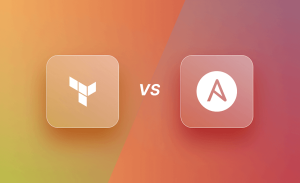
The Sovereign Gold Bond (SGB) Scheme is a government-backed investment scheme introduced by the Reserve Bank of India (RBI) on behalf of the Government of India. It allows individuals to invest in gold in a non-physical form, providing an alternative to owning physical gold.
Here are some key points about the Sovereign Gold Bond Scheme:
- Objective: The primary objective of the scheme is to encourage individuals to invest in gold and reduce the demand for physical gold. It aims to provide a secure, transparent, and convenient investment option for individuals.
- Issuance: The SGBs are issued by the RBI on behalf of the government. They are available for purchase in specific tranches or series, with each series having a defined issue period.
- Denomination: The bonds are denominated in grams of gold, allowing investors to buy and hold gold in a fractional form. The minimum investment is typically one gram of gold.
- Tenure: The maturity period of the Sovereign Gold Bonds is usually eight years, with an option to exit after the fifth year. Early redemption is also allowed on specific dates.
- Interest and Returns: The SGBs offer an annual interest rate, which is currently fixed at a certain percentage (e.g., 2.5%) payable semi-annually. Additionally, investors benefit from the potential appreciation in the price of gold during the investment period.
- Security: The Sovereign Gold Bonds are backed by the government, making them a secure investment option. The bonds are issued in dematerialized form and held in the investor’s Demat account.
- Tradable: SGBs can be traded on the stock exchanges, providing liquidity to investors. The bonds can be bought and sold on the secondary market, subject to market conditions.
- Tax Benefits: The interest earned on SGBs is taxable as per the income tax laws applicable to individuals. However, capital gains arising at redemption are exempted from tax. It is advisable to consult with a tax advisor for specific tax implications.
- Eligibility: The SGBs are open to resident individuals, Hindu Undivided Families (HUFs), trusts, universities, and charitable institutions. Non-resident Indians (NRIs) are also eligible to invest in the scheme.
- Application Process: Investors can apply for the Sovereign Gold Bonds through scheduled commercial banks, designated post offices, and recognized stock exchanges during the subscription period of each series.
It’s important to note that the features and terms of the Sovereign Gold Bond Scheme may vary from one series to another, so it’s recommended to refer to the specific guidelines and notifications issued by the RBI and the government for the latest updates.
The Sovereign Gold Bond Scheme provides an avenue for individuals to invest in gold while enjoying the benefits of safety, liquidity, and potential returns. It offers an attractive alternative to physical gold investment and aligns with the government’s objective of reducing the country’s reliance on imported gold.
Benefits of the Sovereign Gold Bond Scheme
The Sovereign Gold Bond (SGB) Scheme offers several benefits to investors. Here are some key advantages of investing in the Sovereign Gold Bond Scheme:
- Safety and Security: SGBs are issued by the government, making them a secure investment option. They carry the sovereign guarantee, which means the government backs the bonds, providing assurance to investors.
- Exposure to Gold: SGBs allow investors to gain exposure to the price movements of gold without the need to physically own or store the metal. This eliminates concerns related to storage, security, and the risk of theft or loss.
- Capital Appreciation: As SGBs are linked to the price of gold, investors can benefit from potential capital appreciation if the price of gold increases over time. This offers an opportunity for investors to grow their investment along with the performance of the gold market.
- Interest Income: In addition to potential capital appreciation, SGBs also provide regular interest income. The bonds offer a fixed interest rate, which is paid semi-annually. This feature makes SGBs more attractive compared to physical gold, which does not generate any interest.
- Liquidity: SGBs are tradable instruments and can be bought and sold on the secondary market through recognized stock exchanges. This provides investors with liquidity and flexibility to exit their investment before maturity, subject to market conditions.
- Tax Benefits: SGBs offer tax benefits to investors. The interest income received from the bonds is taxable as per the individual’s income tax slab rate. However, capital gains arising at redemption are exempt from tax. This can be advantageous for investors seeking tax-efficient investment options.
- No Making Charges or Storage Costs: Unlike physical gold, SGBs do not involve any making charges or storage costs. Investors can avoid expenses associated with purchasing and storing physical gold, making it a cost-effective investment option.
- Transparency: SGBs provide transparency in terms of pricing and valuation. The issue price of the bonds is based on the average closing price of gold of 999 purity published by the India Bullion and Jewellers Association Limited (IBJA). This ensures a fair and transparent valuation process.
- Diversification: Investing in SGBs allows individuals to diversify their investment portfolio by including an asset class like gold. Diversification can help reduce overall investment risk and potentially enhance returns.
- Easy Purchase Process: Investors can easily purchase SGBs through authorized banks, post offices, and recognized stock exchanges during the subscription period. The process is straightforward and hassle-free compared to buying physical gold.
It’s important to note that while the Sovereign Gold Bond Scheme offers several benefits, investors should carefully consider their investment goals, risk tolerance, and tax implications before making investment decisions. It is advisable to consult with financial advisors or experts to assess how SGBs fit into one’s overall investment strategy.







